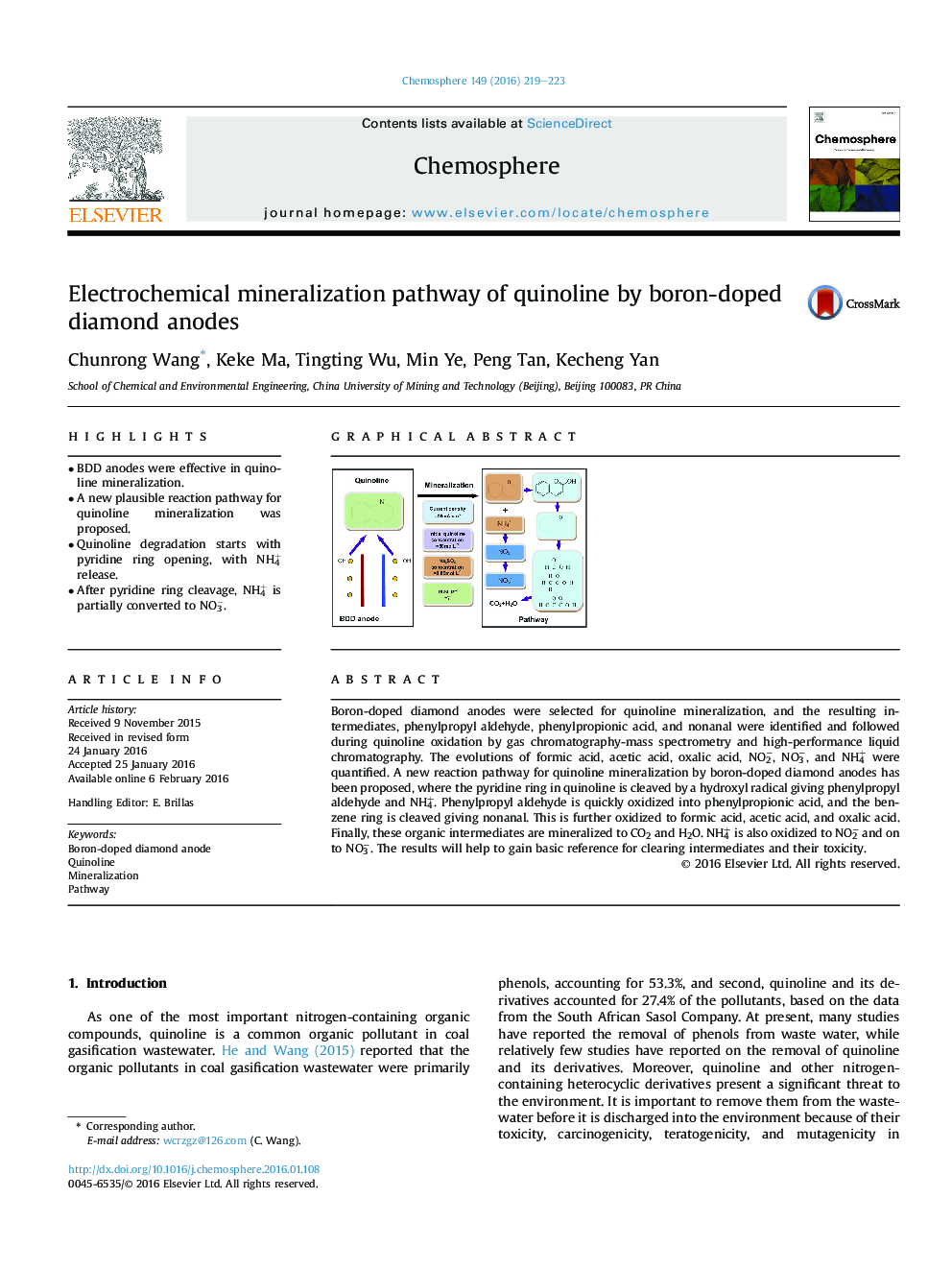| Article ID | Journal | Published Year | Pages | File Type |
|---|---|---|---|---|
| 4407916 | Chemosphere | 2016 | 5 Pages |
•BDD anodes were effective in quinoline mineralization.•A new plausible reaction pathway for quinoline mineralization was proposed.•Quinoline degradation starts with pyridine ring opening, with NH4+ release.•After pyridine ring cleavage, NH4+ is partially converted to NO3−.
Boron-doped diamond anodes were selected for quinoline mineralization, and the resulting intermediates, phenylpropyl aldehyde, phenylpropionic acid, and nonanal were identified and followed during quinoline oxidation by gas chromatography-mass spectrometry and high-performance liquid chromatography. The evolutions of formic acid, acetic acid, oxalic acid, NO2−, NO3−, and NH4+ were quantified. A new reaction pathway for quinoline mineralization by boron-doped diamond anodes has been proposed, where the pyridine ring in quinoline is cleaved by a hydroxyl radical giving phenylpropyl aldehyde and NH4+. Phenylpropyl aldehyde is quickly oxidized into phenylpropionic acid, and the benzene ring is cleaved giving nonanal. This is further oxidized to formic acid, acetic acid, and oxalic acid. Finally, these organic intermediates are mineralized to CO2 and H2O. NH4+ is also oxidized to NO2− and on to NO3−. The results will help to gain basic reference for clearing intermediates and their toxicity.
Graphical abstractFigure optionsDownload full-size imageDownload as PowerPoint slide
